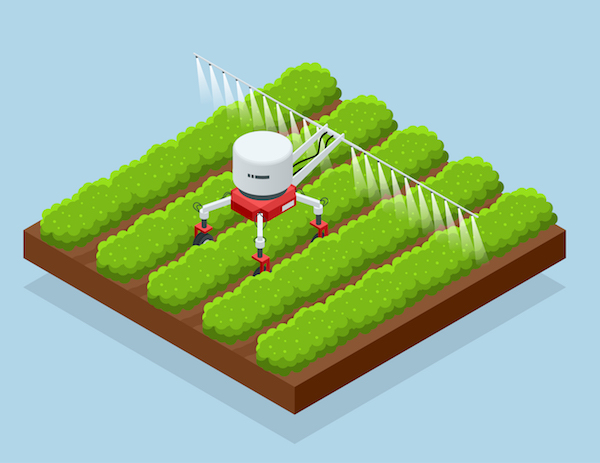Farming equipment has come a long way and at the recent Consumer Electronics Show in Las Vegas, NV, John Deere made a big splash with their new technology. Exhibited in 2019, John Deere’s newest combine showed signs of life with its machine learning capabilities and artificial intelligence. This year, they showed off their newest sprayer with technology acquired from their Blue River buyout of $300 million in 2017.
Since 2017, many in the agriculture community have been waiting for the technology to differentiate a plant from a weed in real time. With Deere’s newest equipment, the See & Spray, that is now possible. By using a downward facing camera, images of the surrounding area are scanned and used to recognize the good from the bad. Powered from a NVIDIA computer chip, these systems can identify plants from weeds or soil and then apply a protective chemical over only the unwanted weeds, leaving the crop untouched.
Why is this important?
Pesticides and chemicals are extremely expensive and bad for the environment. Farmers are also looking for ways to keep their crops safe and healthy while saving money. Based on current findings, this technology could decrease the total amount of pesticides used worldwide to about 2.5 billion pounds annually. That is about an 80% reduction in pesticides used on a yearly basis, keeping the planet healthier while saving time and money.
When it comes to specialty crops, once again, this technology using cameras and custom lens designs allows for the identification and harvesting of only the viable plants, leaving weeds and other growth to be killed. Murali Gopalakrishna, who heads up the NVIDIA product management for intelligent machines, has acknowledged that these machines are already in commercial uses specifically in the lettuce and strawberry fields throughout the U.S.
What are the costs of these robots?
As many know, farming equipment can be extremely expensive. In order to cut costs without mortgaging the farm, Gopalakrishna sees these machines being used as more of a service provided to farms rather than the farmer actually purchasing these costly machines. Regional providers may own, operate and maintain the robots and charge based on an acreage or hourly rate dramatically reducing the out of pocket costs to the growers.
Ultimately, getting these machines to market at a large scale will be the goal and utilizing these precise custom cameras and lenses combined with user input and large scalability will help reduce farming costs, increase production and save billions of dangerous pesticides being used around the world.